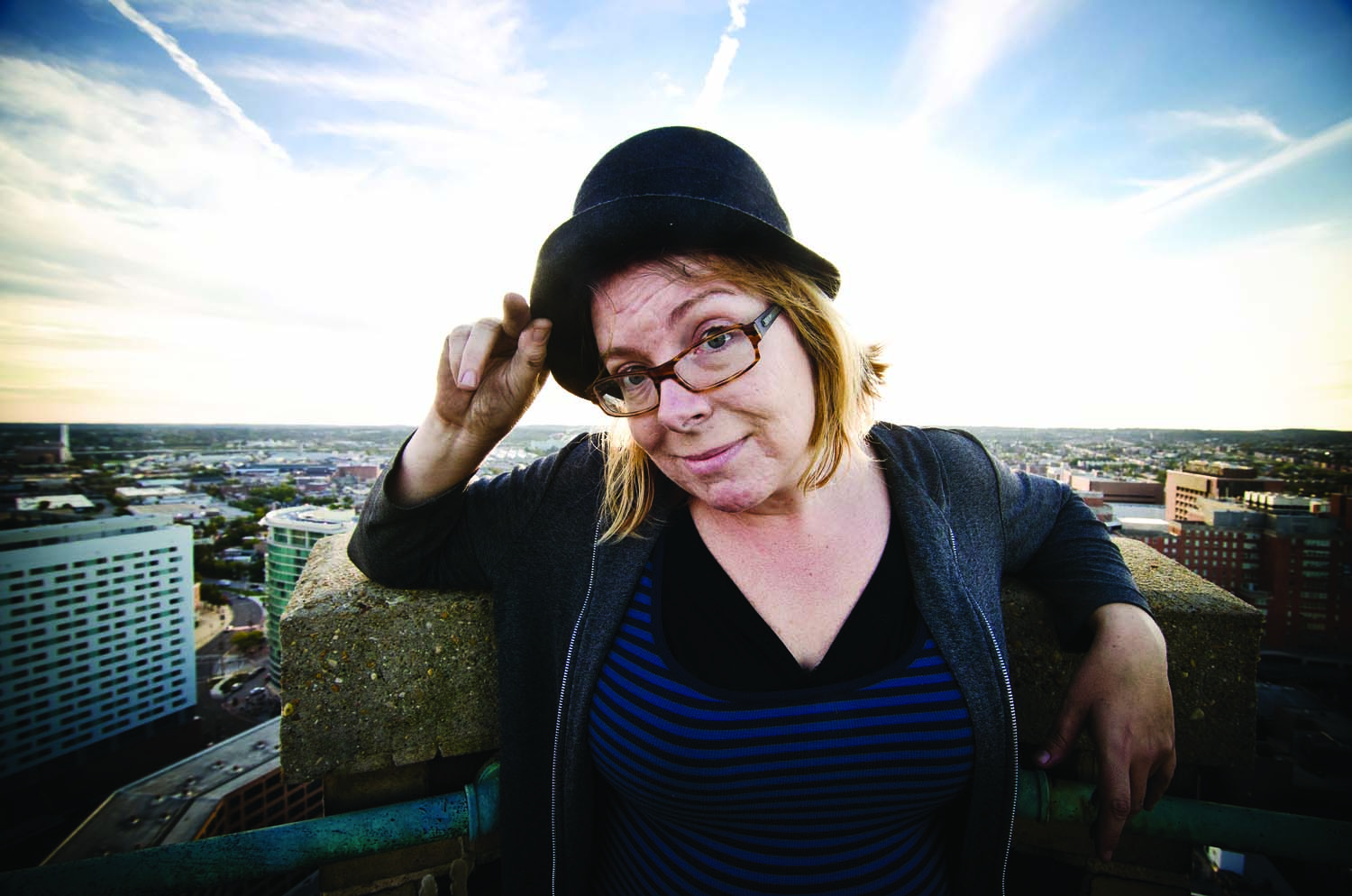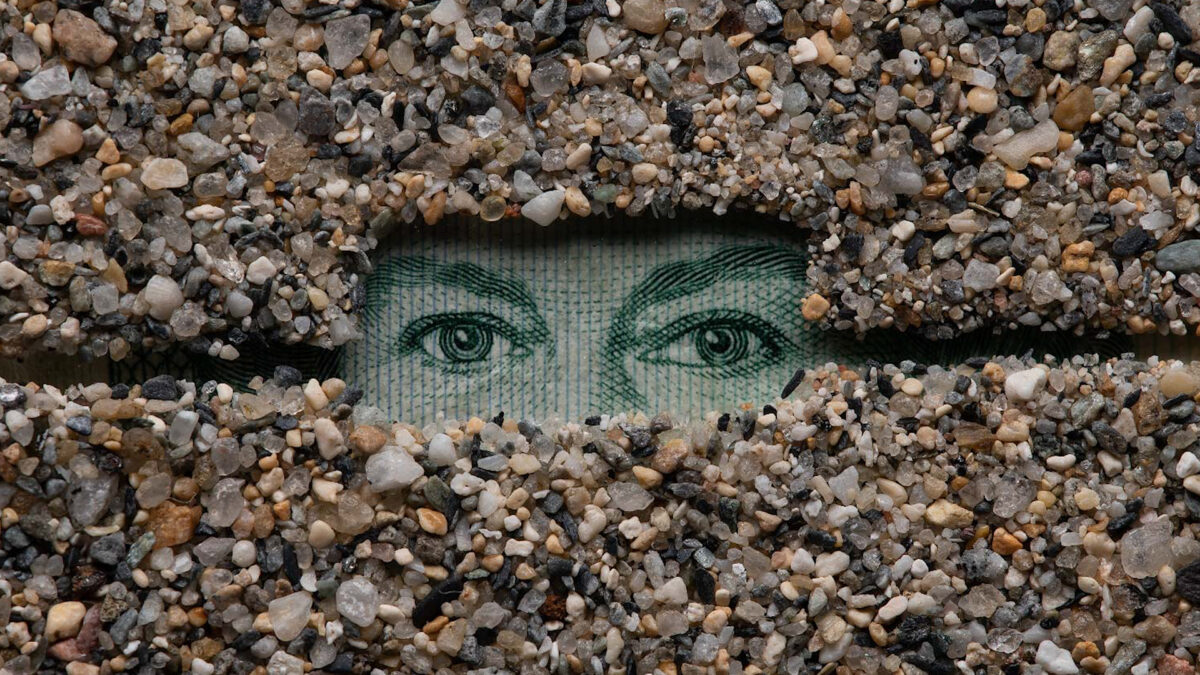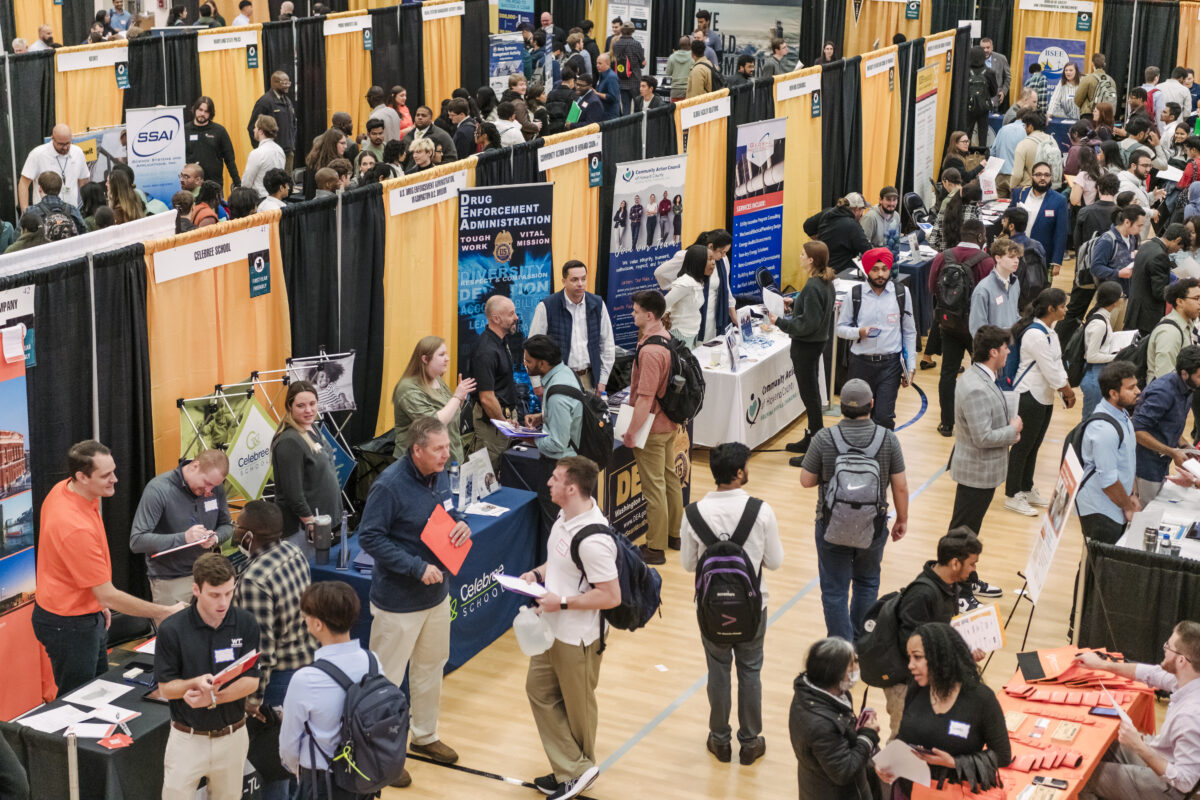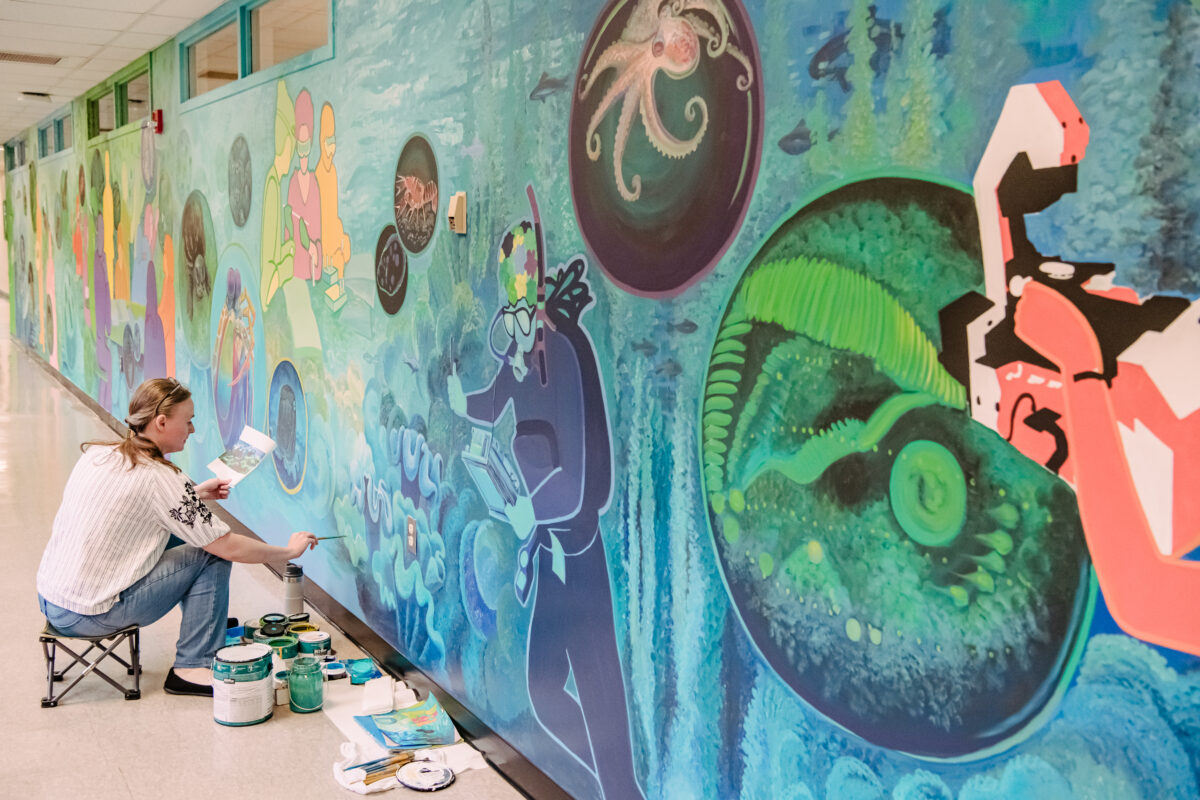Picture this: It’s a cool, crisp night and you’re cruising north up Interstate 95, with the city of Baltimore rising up before you. The image of a metropolis can rise and fall with its skyline and its immense iconic representation of the city’s civic aspirations.
Much of Baltimore’s story is written in its skyline. There’s the urban renewal that spawned the National Aquarium and the twin stadiums of South Baltimore, for instance. The city’s history is also etched there in places such as the famous and distinctive Emerson Bromo-Seltzer Tower, which was built in 1911 at the corner of Eutaw and Lombard Streets.
Kelley Bell ’06, M.F.A., a graphic designer and professor at UMBC, was recently given an opportunity to transform the city’s skyline by creating art within the tower’s distinctive clock faces. Her exhibit is based on the renowned astronomical clock in Prague, and features the sun, the moon, and planets and stars circling in orbit around the tower. Bell even did careful calculations to ensure that her representations of heavenly bodies synched up with their celestial counterparts.
Bell moved to Baltimore in 2002, and quickly fell in love with the local art scene. “People are willing to share ideas and collaborate, and that’s an integral part of the work I do,” she explains.
Not long after her arrival, Bell enrolled in UMBC’s Imaging and Graphic Design M.F.A. program. She says the program’s faculty and her fellow students exposed her to new opportunities and ideas within her field, and she ultimately decided to take four years to complete her studies. “That fourth year [at UMBC] was the best thing I’ve done in terms of my development as an artist,” she says.
That last year, in fact, was when Bell started working with a projector as a means of enriching and showcasing her work.
“One of the challenges, for me, was figuring out how to get my work off the screen,” says Bell. “As long as you have that piece of glass separating you from the work, there’s a barrier.”
Bell began the push to move away from the screen by creating a series of expansive gallery installation pieces, but she ultimately moved to using a projector because it allowed for a more manageable and portable experience.
One of the artist’s early projector-based pieces was called “White Light, Black Birds.” It involved Bell driving around Baltimore City and beaming her depictions of ravens on to various historical buildings, as well as sites of less importance, such as gas tanks.
“White Light, Black Birds” was meant to highlight how the natural and necessary act of urban development also has a downside. “There’s so much of Baltimore’s character being lost,” Bell says. “I wanted to see if people were noticing this and if they cared.”
The “White Light, Black Birds” project gave Bell a new insight into her own artistic passions and how they might express her concerns about architecture as history and the use of public space. It drove her to experiment with projection, to see how light would look on different buildings. And it ultimately led to her work with the Bromo-Seltzer Tower, which Bell sees as a great honor.
This most recent exhibition is actually Bell’s second project with the Bromo-Seltzer Tower. A few years ago, Bell met with the tower’s manager because she was interested in projecting art on the outside of the building. Instead, he showed her the glass faces of the clocks, and Bell was hooked. After months of testing, she projected blue bubbles onto the clock faces, echoing the fizz and pop of the tower’s antacid namesake. This bubbly project set the stage for the new celestial exhibit, and Bell couldn’t be more pleased with the results.
“This is the highest point you can get to,” she says. “I go up in that tower and I think, ‘I’m the luckiest person in Baltimore. This is my office.’ How many people can say that?”
— Meredith Purvis
Photo: Josh Sisk/joshsisk.com
Tags: visual arts, Winter 2012




